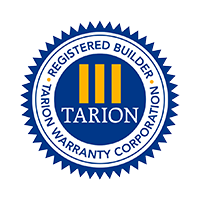Frequently Asked Questions
How much does a whole home renovation cost?
The cost of a whole home renovation varies widely based on factors such as location, size, and the extent of changes desired, typically ranging from $100 to $400 per square foot.
What does a full home renovation include?
A full home renovation includes the comprehensive transformation of living spaces, typically involving structural changes, updated electrical and plumbing systems, new flooring, kitchen and bathroom remodels, and fresh paint, all tailored to enhance functionality and aesthetics.
How to find a good contractor in Toronto?
Finding a good contractor in Toronto involves researching local providers, checking their credentials and reviews, and obtaining multiple quotes. Ensure they are licensed and insured, and don’t hesitate to ask for references from past clients.
What is the hourly rate for contractors in Toronto?
The hourly rate for contractors in Toronto typically ranges from $50 to $150, depending on the contractor’s expertise, type of work, and project complexity. Rates may vary further based on specific industry demands.
What factors affect home renovation costs?
The factors that affect home renovation costs include the scope of the project, materials used, labor expenses, location, and any necessary permits or inspections. Each of these elements can significantly influence the overall budget and final price.
How to budget for home renovations?
Budgeting for home renovations involves assessing overall costs, setting a realistic budget, and prioritizing projects. Start by researching expenses for materials and labor, and include a contingency fund of 10-20% for unforeseen costs.
Which renovations add the most value?
The renovations that add the most value include kitchen upgrades, bathroom remodels, and energy-efficient improvements. These enhancements not only elevate the home's appeal but also significantly increase its market value.
What should I expect during renovations?
During renovations, you can expect disruptions to your daily routine, potential noise, and dust levels, as well as varying timelines for project completion. Clear communication and flexibility will help ensure a smoother process.
How long do whole home renovations take?
Whole home renovations typically take anywhere from three to six months, depending on the complexity of the project, design choices, and contractor availability. Factors like permitting and unforeseen issues can also affect the timeline.
Can I live in my home during renovations?
You can live in your home during renovations, but it may depend on the extent of the work. Minor renovations are often manageable, while major remodels could disrupt your daily life and require temporary relocation for safety and comfort.
What permits are needed for renovations?
The permits needed for renovations vary by location and project scope. Typically, a building permit is required for major changes, while minor alterations may need a simple renovation permit. Always check with your local municipality for specific requirements.
Are DIY renovations a good idea?
DIY renovations can be a great idea, as they often save money and allow for personalized design choices. However, it’s crucial to assess your skills and the project’s complexity to avoid costly mistakes.
What are common renovation mistakes to avoid?
Common renovation mistakes to avoid include underestimating budget and timeline, neglecting proper planning, choosing low-quality materials, overlooking functionality, and failing to hire qualified professionals. Careful consideration of these factors can lead to a successful renovation.
How to choose materials for renovations?
Choosing materials for renovations involves considering durability, style, and budget. Evaluate the function of each space, seek sustainable options, and ensure the materials complement your overall design theme for a cohesive look.
What trends are popular in home renovations?
Current trends in home renovations include open-concept layouts, sustainable materials, smart home technology integration, and a focus on multifunctional spaces that enhance both style and functionality.
How to select the right design style?
Selecting the right design style involves identifying your personal preferences, understanding the space's functionality, and considering the overall vibe you wish to create. Exploring various styles and gathering inspiration can help clarify your choices.
What should be included in a renovation contract?
A renovation contract should include project specifications, timelines, payment schedules, permits required, and details on warranties and responsibilities. Additionally, it should outline conditions for changes or cancellations to ensure clear communication between all parties involved.
How do I prepare my home for renovations?
Preparing your home for renovations involves clearing the space, protecting your belongings, and ensuring utilities are accessible. Designate a staging area for supplies and maintain open communication with your contractor to facilitate a smooth process.
What is the best time for renovations?
The best time for renovations is typically during spring or early fall when weather conditions are mild, allowing for better ventilation and project timelines. Additionally, planning renovations during off-peak seasons can help you avoid contractor wait times and potentially lower costs.
How to find reliable subcontractors for renovations?
Finding reliable subcontractors for renovations involves researching their credentials, reviewing past work, and checking references. Additionally, seeking recommendations from trusted sources and obtaining multiple quotes can help ensure you choose qualified professionals.
What warranties should I look for in renovations?
Warranties to consider in renovations include workmanship warranties, which cover defects in installation, and product warranties, ensuring materials are free from faults. It's crucial to review terms for duration and coverage specifics for adequate protection against issues.
How to evaluate contractor quotes effectively?
Evaluating contractor quotes effectively involves comparing prices, assessing the scope of work, and reviewing materials and timelines. Ensure each quote is comprehensive and aligns with your project requirements to make an informed decision.
How can I ensure quality workmanship?
Ensuring quality workmanship involves selecting experienced professionals, reviewing past work, and obtaining references. Additionally, clearly communicating your expectations and maintaining oversight during the project will help achieve high standards in the finished result.
What should I do if renovations go over budget?
If renovations go over budget, assess the reasons for the overspending, prioritize essential modifications, and consider alternatives or adjustments to your plan. Additionally, communicate with your contractor to explore cost-saving measures or potential financing options.
What is a renovation timeline I should expect?
The renovation timeline you should expect typically ranges from a few weeks to several months, depending on the scope of the project. Factors include the size of the space, complexity of the work, and material availability.
How to communicate effectively with my contractor?
Effective communication with your contractor involves being clear about your expectations, discussing project timelines, and addressing any concerns promptly. Regular check-ins and open dialogue help ensure alignment and a successful partnership throughout the project.
What roles do architects play in renovations?
The roles architects play in renovations include designing functional spaces, ensuring compliance with building codes, coordinating with contractors, and providing creative solutions to enhance aesthetics and efficiency in the remodeled environment.
How to verify a contractors credentials?
To verify a contractor's credentials, check their licensing and insurance details, ask for references, and review their past work. Additionally, consult online reviews and local regulatory agencies to ensure they are reputable and qualified for your project.
What insurance do I need for renovations?
The insurance you need for renovations includes general liability insurance to cover property damage or injury, builder's risk insurance for coverage during construction, and potentially worker’s compensation if hiring contractors.
How can technology improve the renovation process?
Technology can significantly improve the renovation process by enhancing project planning, communication, and execution. Tools like 3D visualization, project management software, and smart home integration streamline workflows and ensure better collaboration between designers, contractors, and clients.



